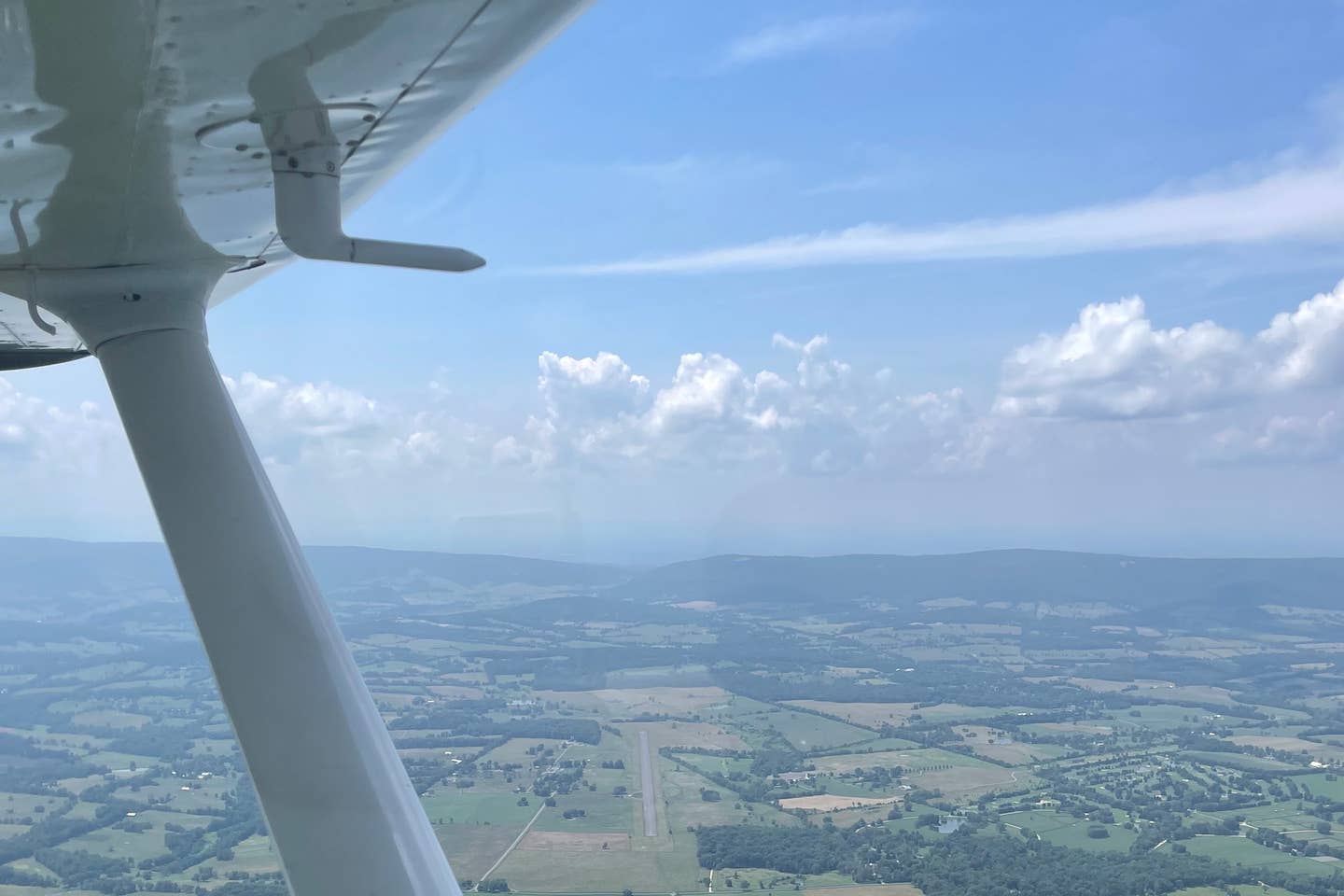
The joy of circumnavigating the D.C. airspace has compensation in beautiful views. Courtesy Julie Boatman
The silence on the Potomac Approach frequency was stark. It was September 17, 2001, and I was flying a Piper Archer from KFDK in Frederick, Maryland, down to Newport News (KPHF), Virginia, logging two hours down and 1.7 on the return. I filed IFR on a day of shockingly blue skies because that was the only way to operate six days after the World Trade Center towers came down, the Pentagon’s seemingly impenetrable belt line was breached, and a field in Pennsylvania became a final resting place for heroic souls. A defining moment, when I felt viscerally how the world had changed.
Twenty years later, I’m circumnavigating the special flight rules area around Washington, D.C., but I’m VFR and monitoring my fellow pilots and controllers on a sunny summer Sunday without any particular restriction to my flight path beyond my choice to stay outside of Class B. That I choose to just listen stems from my desire to hold on to a certain amount of freedom in my flying—and because the ADS-B In traffic data illuminates almost every target that ATC would call out to me anyway.
One September morning, the ground shifted under us. But we overcame it all. With persistence, we rolled back the most onerous provisions against general aviation; the total lockout of all GA traffic from Class B airspace was on the table at one point. Permission to land at the GA airports inside the flight restricted zone was for only those already based there, and no one save the airlines and government aircraft could land at KDCA. I thought, “How would those ‘DC-3’ airports survive?”
Well, in March of this year, I flew in and out of College Park Airport (KCGS) with a friend with a PIN (I need to get my own now that I’m based back in the Washington, D.C., area). That I have a path to the PIN needed to fly in I also consider a win for GA; you can apply for one by going through a background check and interview. That we’ve maintained that privilege 20 years down the road, to me, solidifies the fact we are mostly responsible, competent users of the national airspace system. In June, I went to a lively hangar party at Potomac Airfield (KVKX), with Washington Executive/Hyde Field (W32) remaining open just a mile to the east.
Leesburg Executive Airport (KJYO) in Virginia has a cutout enabling the relative free-flow of student and corporate traffic. In New York, the Hudson corridor can be flown by anyone with a chart of the VFR flyways.
Read more letters from Julie Boatman: View From Above
And we have flown through it all as an industry, continuing to innovate, continuing to lead with our very best. We’ve seen it in the expansion into commercial spaceflight, and we celebrate the achievements of SpaceX in cooperation with NASA inspiring us into orbit—and beyond.
We’ve seen it in the power that one device—the autothrottle—has brought to single-engine and multiengine turboprops and jets. The assist it gives to those flying single-pilot earns our respect and admiration. We salute Innovative Solutions & Support for its continued drive to apply this efficient, workload-saving technology in future mounts.
And we’ve seen it in the market acceptance of Garmin’s Autoland, the winner of the Flying Innovation Award for 2021. For more on the Autonomi avionics and systems suite, and its application in Piper Aircraft’s PA-46s, see “We Fly: Piper M600/SLS Halo” in these pages. As we’re tying up the bow on this issue, we’re also preparing for the EAA AirVenture in Oshkosh, Wisconsin, where we’ll present the award and see our aviation friends there for the first time since 2019. A defining moment, indeed.
These moments add perspective. Sometimes we see changes coming, and sometimes they hit us like a bolt from the blue. But we have the strength, courage and creativity to navigate the changes, move forward and embrace the opportunity ahead.
This story appeared in the September 2021 issue of Flying Magazine

Sign-up for newsletters & special offers!
Get the latest FLYING stories & special offers delivered directly to your inbox






